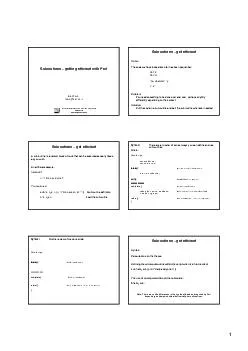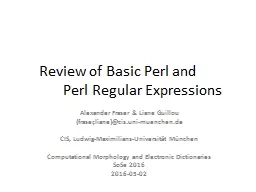PDF-Subroutines getting efficient with Perl Environmental Genomics Thematic Programme Data
Author : pamella-moone | Published Date : 2014-12-13
noxacuk Bela Tiwari btiwaricehacuk Subroutines get efficient So far The code we have looked at so far has been sequenti al do this do that now do something finish
Presentation Embed Code
Download Presentation
Download Presentation The PPT/PDF document "Subroutines getting efficient with Perl..." is the property of its rightful owner. Permission is granted to download and print the materials on this website for personal, non-commercial use only, and to display it on your personal computer provided you do not modify the materials and that you retain all copyright notices contained in the materials. By downloading content from our website, you accept the terms of this agreement.
Subroutines getting efficient with Perl Environmental Genomics Thematic Programme Data: Transcript
Download Rules Of Document
"Subroutines getting efficient with Perl Environmental Genomics Thematic Programme Data"The content belongs to its owner. You may download and print it for personal use, without modification, and keep all copyright notices. By downloading, you agree to these terms.
Related Documents














